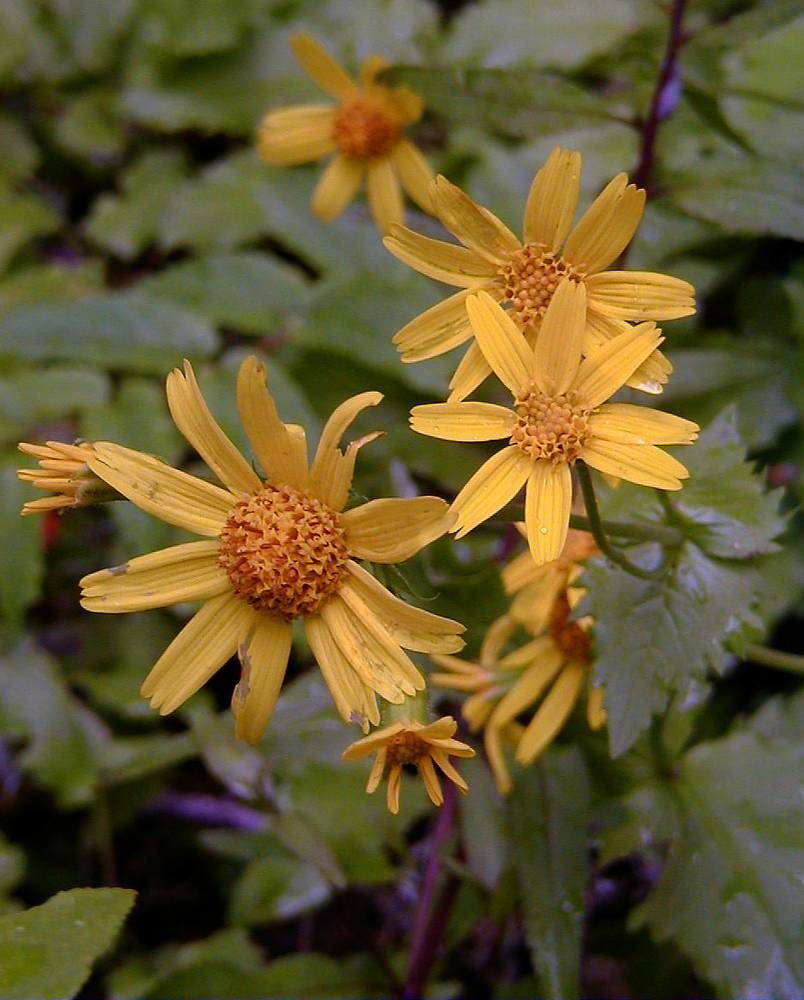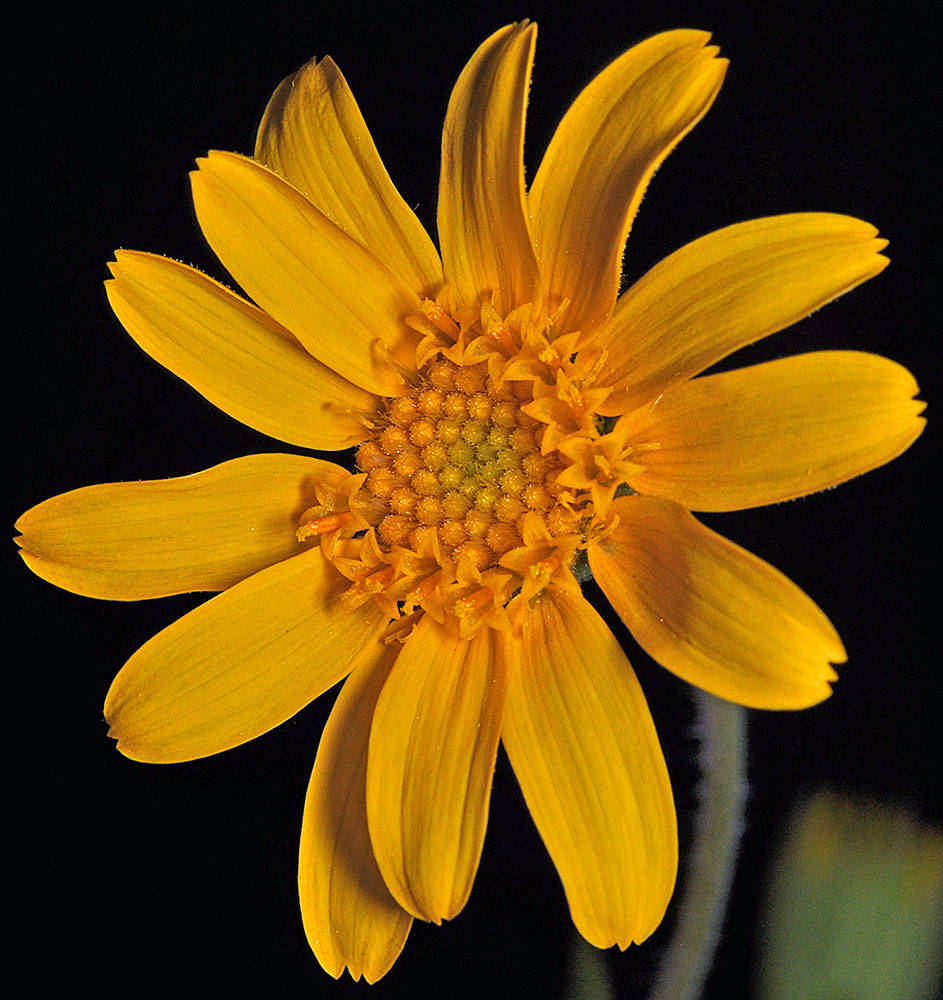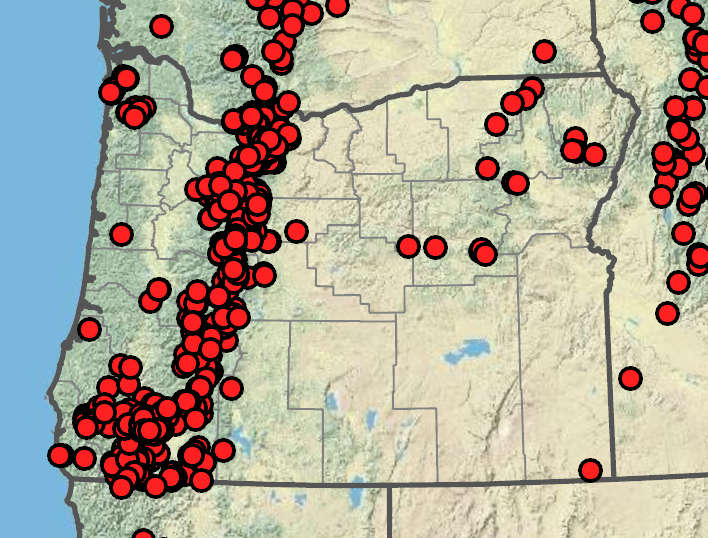Arnica latifolia
Arnica sororia
broadleaf arnica, mountain arnica
bunch arnica, twin arnica
usually simple, sometimes branched, glabrous to puberulent or villous.
simple or branched distally, densely glandular-puberulent throughout, sometimes lightly pilose.
withering early, usually in separate sterile rosettes, petiolate.
petioles narrow or winged.
2–4 pairs;
blades ovate, lanceolate, or elliptic, 1.5–14 cm, bases rounded to attenuate, rarely truncate or cordate;
margins entire to denticulate, dentate, or serrate;
veins branching laterally;
tips acute;
surfaces glabrous to puberulent or strigose;
adaxial surfaces sometimes densely and minutely strigillose; most sessile; lower pair sometimes subsessile.
2–4 pairs, crowded near base, reduced distally;
blades broadly or narrowly elliptic-lanceolate to linear, 3–10 cm, bases attenuate or rounded;
margins entire, rarely denticulate;
veins parallel from bases;
tips acute;
surfaces glandular-puberulent, sometimes spiculate or pilose on veins, petiolate proximally, sessile distally;
petioles often winged.
glabrate or villous, sometimes glandular-puberulent at apex.
densely glandular-puberulent, often villous beneath heads.
cylindric to campanulate or hemispheric, 8–15 mm.
campanulate to hemispheric, 9–17 mm.
5–15;
rays 10–28 mm, yellow.
9–17;
rays 15–30 mm, orange-yellow.
20–90;
corollas 6–10 mm, yellow.
15–60, 6–10 mm, yellow, with glandular trichomes.
broadly or narrowly lanceolate to oblanceolate, elliptic, or linear;
tips acute or acuminate;
surfaces glabrous to pilose or villous, sometimes tomentulose or glandular-puberulent at bases.
lanceolate or elliptic to linear;
tips acute or acuminate;
surfaces stipitate-glandular or glandular-puberulent, usually pilose.
columnar-fusiform, 5–9 mm, dark brown, glabrous to glandular-puberulent;
pappus bristles 5–7 mm, white, barbellate.
tapered, 3.5–5.5 mm; black; hispid or glandular-puberulent;
pappus bristles 6–9 mm, white or straw-colored, barbellate.
radiate.
radiate.
=38, 76.
=38.
Arnica latifolia
Arnica sororia
Coniferous forests, meadows, shrublands, cliffs, rocky talus, clearcuts, roadsides. Flowering May–Sep. 300–2300 m. BW, Casc, CR, ECas, Owy, Sisk. CA, ID, WA; north to AK, northeast to Alberta, east to WY, southeast to NM. Native.
Coniferous forests, shrublands, grasslands, dry slopes, cliffs, roadsides. Flowering May–Jul. 300–2000 m. BR, BW, Col, ECas, Owy. CA, ID, NV, WA; north to British Columbia, northeast to Saskatchewan, east to WY, southeast to UT. Native.
Kenton Chambers
Kenton Chambers
- Local floras:
BC,
CA,
OR,
WA
- Local Web sites:
CalFlora,
CalPhotos,
Flora NW,
PNW Herbaria,
Turner Photog.
WildflowerSearch
iNaturalist (observations)
USDA Plants Database
- LBJ Wildflower Center
- SEINet
- Plants of the World Online
- Encyclopedia of Life
- Wikipedia
- Google Image Search
- Local floras:
BC,
CA,
OR,
WA
- Local Web sites:
CalFlora,
CalPhotos,
Flora NW,
PNW Herbaria,
Turner Photog.
WildflowerSearch
iNaturalist (observations)
USDA Plants Database
- LBJ Wildflower Center
- SEINet
- Plants of the World Online
- Encyclopedia of Life
- Wikipedia
- Google Image Search





